Forgotten Giant - Page 3
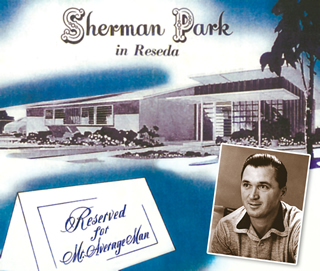 |
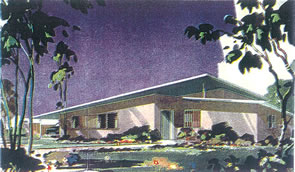 |
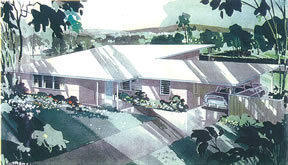 |
|
|
On top of all this, Fickett was a live-life-to-its-fullest kind of guy. Tall and good looking, he was "very charismatic. He would dominate the activity in a room," recalls Arthur Danielian, an architect who worked for Fickett as a young man. "He enjoyed people."
Fickett was born in 1916 (many publications say 1923, which is wrong). He studied at the University of Southern California and later at MIT, and worked for several leading Los Angles architects as a young man, including Paul R. Williams and Sumner Spaulding.
Fickett's first wife, Lucille, was a well-known interior designer who did interiors for some of his homes. They had one daughter, and later divorced.
A fourth-generation Angeleno, Fickett loved discoursing on the city's history, his widow and second wife, Joycie Fickett, recalls. He loved Beethoven and the opera, and liked to read but had little time for it. When he had time, he enjoyed sculpting, painting, and writing poetry.
Fickett worked nights and many weekends, Joycie says, though he often went in early Sunday morning so he and his wife would have the rest of the day free. He was a superb tennis player.
And he loved to drive his Jaguar XKE. "He was not the slowest guy on the road," Danielian remembers. As an architect, Danielian says, "Ed Fickett was always admired as being one of the best."
Yet today Fickett is largely forgotten.
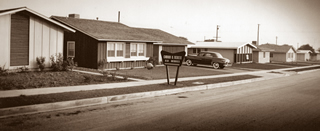 |
|
|
Throughout the Valley, there is scant evidence that people who own Fickett tract homes appreciate their modern characteristics. Judging by replacement doors and windows, and the removal of Fickett signature touches, many Fickett owners don't quite get it.
Despite this, many homes remain relatively unchanged and could be restored to their original look with relatively little effort.
In Fickett's Rollingwood Estates, a beautifully preserved neighborhood built in the mid-1950s, maybe five percent of homeowners really appreciate the area's modernist legacy, say Steve and Cindy Patterson, who are among only two or three owners who have played up the modern in their remodels.
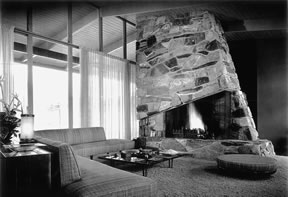 |
|
|
And in the San Fernando Valley neighborhood of Granada Estates, resident Laurie Nielson says, few people know about the architect of their homes or pay much attention to their architectural heritage. "But people walk in my living room and go, 'It's so big. I love it. It's so open!'"
Chris Iovenko, who lovingly restored his Fickett in Nichols Canyon, a neighborhood in the Hollywood Hills, recently watched as a neighbor gutted his Fickett interior. "They had dumpster after dumpster, and it's too bad because it was one of the most original I've seen."




